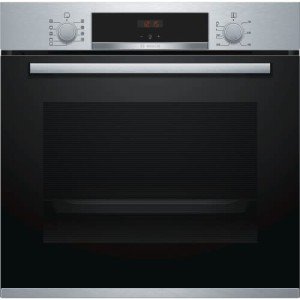The Rise of Built-In Ovens: A Seamless Approach to Modern Cooking
In modern kitchen areas, where style aesthetics blend seamlessly with performance, one appliance stands out as a real video game changer: the built-in oven. As homeowners and chefs alike continue to look for ingenious services that improve their cooking experience, built-in ovens have actually ended up being progressively popular. This short article checks out the benefits, considerations, and patterns surrounding built-in ovens, highlighting why they are a necessary function in modern cooking areas.
What is a Built-In Oven?
A built-in oven is a kitchen area device created to be integrated into the cabinets of a kitchen instead of standing alone. Unlike integrated ovens uk freestanding ovens, which can be moved and positioned anywhere, built-in ovens been available in various styles and sizes to fit particularly within designated areas. Readily available in single or double setups, these ovens use a structured look that matches contemporary kitchen area styles.
Benefits of Built-In Ovens
1. Space-Saving Design
One of the most appealing advantages of built-in ovens is their space-saving design. By incorporating the oven into kitchen cabinetry, you can free up valuable counter and flooring area. This is particularly advantageous in smaller sized kitchen areas, where optimizing space is necessary. Built-in ovens can be installed at eye level, making them more accessible and minimizing the need to bend down.
2. Visual Appeal
Built-in ovens contribute to a sleek and cohesive kitchen area design. Available in numerous surfaces-- such as stainless steel, black, white, and custom cabinetry-- they can blend flawlessly into the overall decor. This aesthetic appeal boosts the kitchen's visual harmony and raises the area, developing a contemporary and sophisticated environment.
3. Enhanced Functionality
Numerous built-in ovens come equipped with advanced cooking innovations, such as convection cooking, steam ovens, and clever functions. These enhancements enable versatile cooking options, making it much easier to achieve professional-level results in the house. Smart built-in ovens can even connect to Wi-Fi, allowing users to manage the oven remotely, get alerts, and gain access to a range of cooking programs and recipes.
4. Improved Ventilation
Since built-in ovens can be integrated with kitchen hoods and ventilation systems, they can assist keep better air quality and minimize cooking odors. This is particularly significant for those who enjoy to prepare with fragrant spices and active ingredients, as an effective ventilation system can keep the kitchen area comfy and welcoming.
5. Customization Options
Built-in ovens offer a broad range of modification choices to match private cooking styles and needs. From professional-grade appliances with multiple cooking modes to compact designs for smaller kitchens, house owners can pick the oven that fits their specific requirements. fitted oven offer personalized front panels, allowing you to match the oven's look to your cabinets for a really unified look.
Factors to consider When Choosing a Built-In Oven
While built-in ovens have many advantages, there are necessary factors to consider to keep in mind before purchasing:
1. Cost
Built-in ovens usually feature a greater price than their freestanding equivalents due to their design and installation requirements. It's important to factor in both the cost of the oven and any extra expenses associated with cabinetry adjustments or installation.
2. Installation Requirements
Installing a built-in oven typically requires expert help, particularly if you need to customize existing cabinets. Make sure that you think about any expenses related to setup, including labor and potential kitchen cabinetry adjustments.
3. Size and Dimensions
Before buying a built-in oven, measure the designated space properly to make sure an appropriate fit. Built-in ovens been available in numerous sizes and configurations, so selecting one that lines up with your needs and kitchen design is crucial.
4. Way of life and Usage
Consider your cooking routines and requires when selecting a built-in oven. If you regularly host big gatherings, a double oven may be more useful. On the other hand, if you have a compact kitchen, a single-wall oven might suffice.
Patterns in Built-In Ovens
The cooking area appliance market is constantly developing, and built-in ovens are not exempt from emerging trends. Some existing trends consist of:
Smart Technology Integration: With the rise of smart home innovation, built-in ovens now often include connection options. This permits users to monitor cooking progress and change settings via mobile apps.
Energy Efficiency: As sustainability ends up being a top priority, numerous manufacturers are investing in energy-efficient built-in ovens that minimize energy usage while preserving efficiency.
Multi-functional Designs: Built-in ovens now offer features such as air frying, slow cooking, and steaming, supplying flexibility that fulfills a large range of cooking techniques.
Conclusion
Built-in ovens unquestionably represent a best mix of style, function, and benefit in today's kitchens. As more homeowners choose this contemporary service, the focus shifts to producing a cooking area that is as aesthetically pleasing as it is practical. Whether you are constructing a new home or redesigning your kitchen, thinking about a built-in oven could raise your culinary experience and transform your cooking area into an elegant and functional sanctuary. With a range of choices available and continuous developments in technology, built-in ovens remain a standout option for both newbie cooks and culinary lovers alike.

